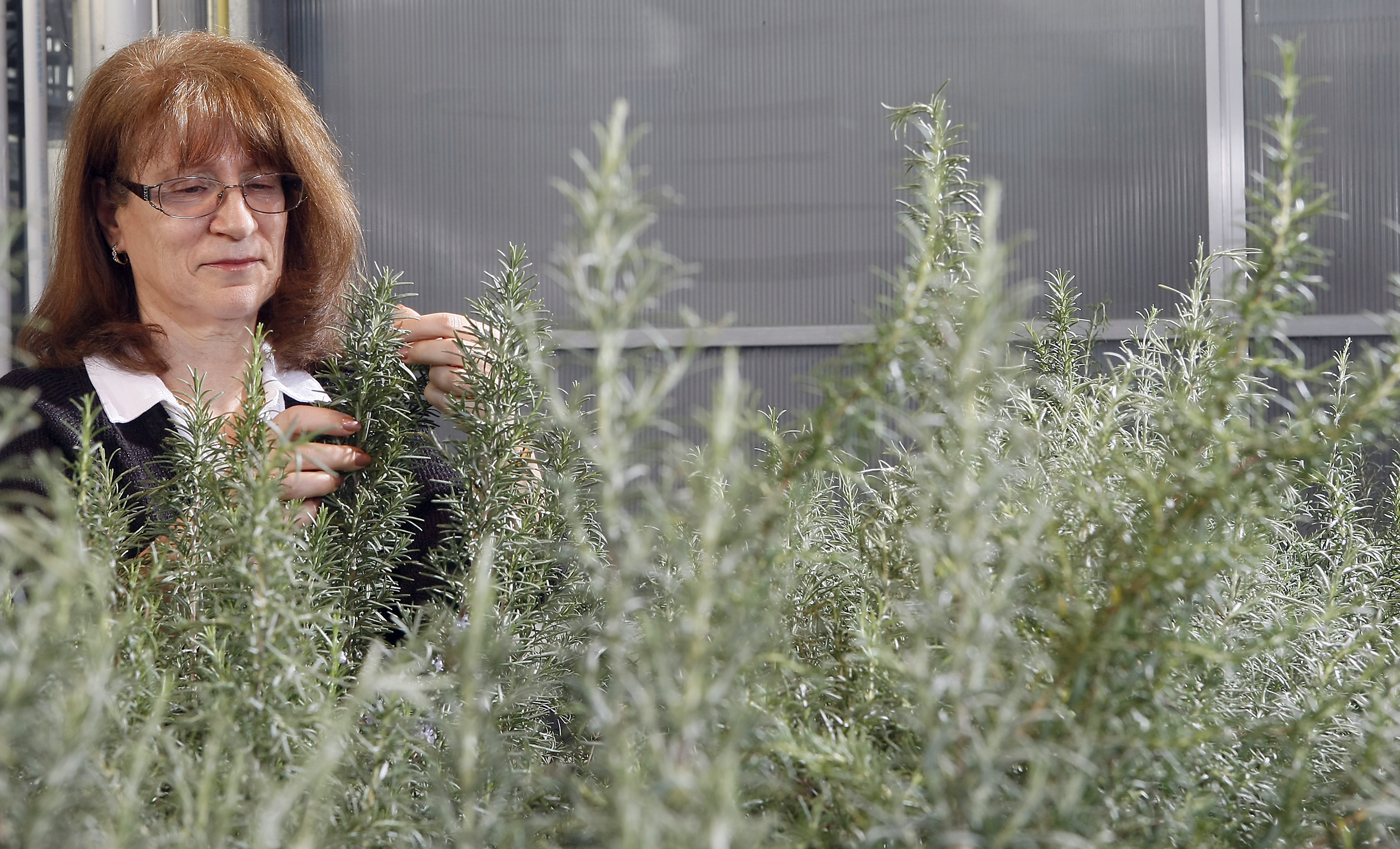West Lafayette, Indiana, USA
December 15, 2011
Scientists at Purdue University and eight other institutions have developed new resources poised to unlock another door in the hidden garden of medicinally important compounds found in plants.
The resources were developed by the Medicinal Plant Consortium, led by the University of Kentucky College of Agriculture. They grew out of a $6 million initiative from the National Institutes of Health to study how the genes of plants contribute to production of various chemical compounds, some of which are medicinally important.

Natalia Dudareva, a Purdue University professor of horticulture and landscape architecture, is using rosemary plants to study how genes produce pharmacologically active compounds. (Purdue Agricultural Communication photo/Tom Campbell)
Purdue professor of horticulture and landscape architecture Natalia Dudareva was part of the research team. Dudareva's work included research on rosemary, a fragrant shrub often used in perfumes and cooking that produces a variety of pharmacologically active compounds.
"This grant allowed for the work of scientists from a number of different universities, with many different areas of expertise," Dudareva said. "We hope the discovery of plant genes leads to new and more effective drugs."
The project includes participants from Purdue, Michigan State University, Iowa State University, the University of Mississippi, Texas A&M University, Massachusetts Institute of Technology, University of Kentucky and the John Innes Institute in Norwich, England. The researchers represent a broad spectrum of expertise including plant biology and systematics, analytical chemistry, genetics and molecular biology, and drug development from natural products.
Some well-known medicines have come from plants. The foxglove plant gives us the cardiac muscle stimulant digoxin, and the periwinkle plant offers a source for the widely used chemotherapy drugs vincristine and vinblastine. These and many other medicinal plants, often commonly found in household gardens and flower boxes, represent cornucopias of compounds ripe for discovering and developing diverse medicinal applications.
During the two-year project, funded through the American Recovery and Reinvestment Act, researchers from two consortia set out to develop a collection of data that would aid in understanding how plants make chemicals, a process called biosynthesis. This knowledge ultimately could make it possible to engineer plants to produce larger quantities of medicinally useful compounds as well as different versions with other therapeutic potential.
To develop the resources, the researchers studied the genes and chemical composition of 14 plants known for their medicinal properties or compounds with biological activity. These included plants such as foxglove, ginseng and periwinkle. Altogether, these efforts are now providing a rich toolbox for researchers to discover the means for how nature's chemical diversity is created, empowering efforts to uncover new drug candidates and increase the efficacy of existing ones.
"There are compounds in rosemary that have been a part of traditional medicine for a long time, although we still don't understand how the plant biosynthesizes them," Dudareva said.
The work of the Medicinal Plant Consortium included obtaining materials for all of the medicinal plants used in this study. The group then determined the plants' chemical profiles and obtained their genetic blueprints to study how genes control the various chemical compositions.
"This work offers a valuable data resource for understanding the genes, enzymes and complex processes responsible for the biosynthesis of important plant-derived drugs," said Warren Jones, who manages this and other research grants in biotechnology at NIH's National Institute of General Medical Sciences, through which the American Recovery and Reinvestment Act funds were provided. "The collaborative effort should greatly contribute to our ability to understand and exploit the rich biochemistry found in plants."
More information about the consortium and the resources provided are available at the following websites: http://medicinalplantgenomics.msu.edu and http://metnetdb.org/mpmr_public/
The second consortium, the Medicinal Plants/Human Health Consortium, led by Norman Lewis, regents professor and director of the Institute of Biological Chemistry at Washington State University, was funded under the same program at the NIH to apply similar technology to other medicinal plants. More information about this consortium can be found at http://uic.edu/pharmacy/MedPlTranscriptome/